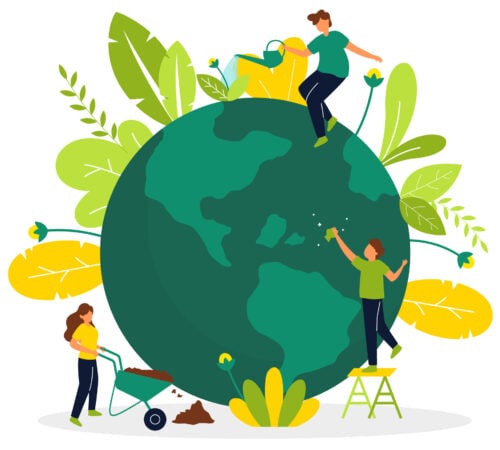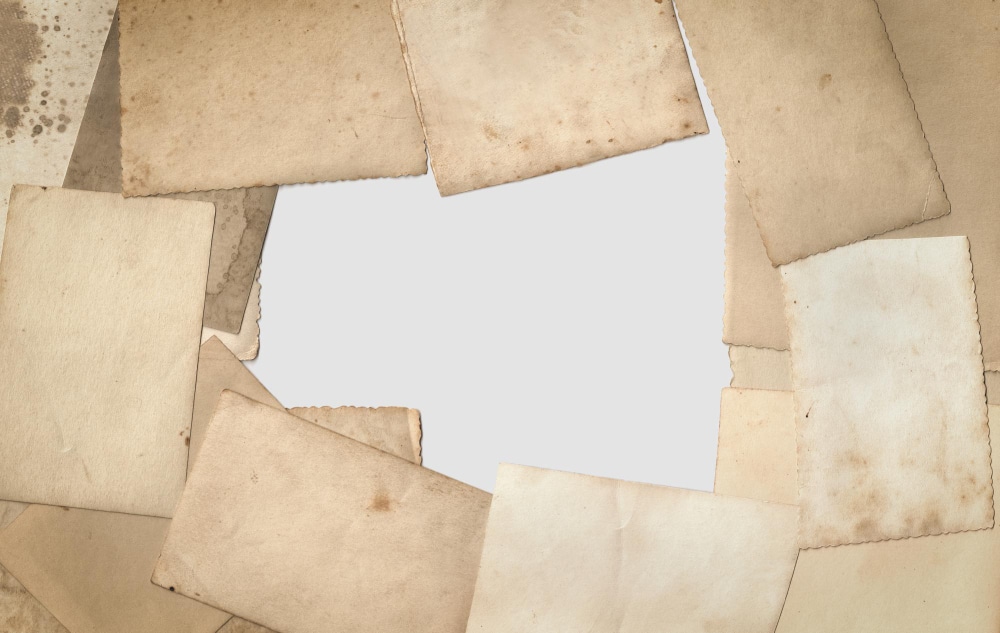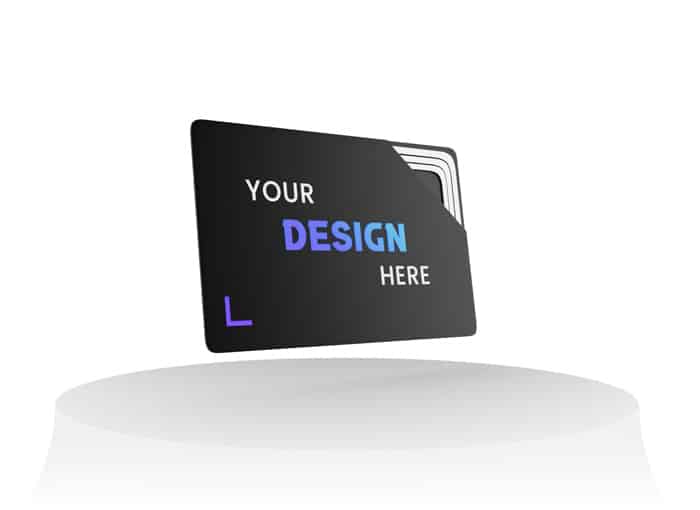
History of the business card: from paper cards to digital cards

The different types of business card and their origins
We often talk about business cards, without really knowing where they come from.
In those days, recipients received information about you and granted a possible “right to visit”: in this way, the host was warned in advance and could anticipate the interview.
Note that in the early 17ᵉ century, people spoke of address cards. They were most often left at shopkeepers’ and were printed in the form of engravings.
They were used by several categories of people, deliverymen or suppliers, craftsmen but also by a large part of the aristocracy and bourgeoisie.
In addition, towards the end of the 17ᵉ century in London, there were also “trade cards”, used mostly by businessmen so that their customers could remember them and come back to trade.
Remember, too, that in the 19ᵉ century, if you wanted to visit someone, you had to give advance notice: so it was customary to send a sort of calling card before you went. Similarly, at cocktail parties, this visiting card was given to the butler who announced you to the guests already present.
The principle of the business card can be traced back to the 17th century in the West, but it really came into its own in the 19th.
Since then, the business card has never ceased to reinvent itself!
The evolution and use of the business card
Let’s take a look at how the business card has evolved over the centuries.
It all began in China in the 15th century!
Before two people or two parties came to an appointment, it was customary for them to invite each other first. In this way, everything was planned in advance: there was no room for improvisation.
Meetings were not random, and announcing oneself was a gesture of consideration for the other.
The 17ᵉ century period
In the 17ᵉ century, there was a sharp increase in the number of homes, stores and boutiques in cities: as a result, it was very common to make a mistake in the address of the place to which one needed to go.
It was to remedy this problem that cards appeared, known as address cards. They had a special structure, identifying the company on one side and directing the visitor or customer on the other, making it easy to find your destination.
The address card was like a miniature guide or map.
Towards the end of the same period, a new form of business card appeared in England, known as “trade cards”.
They enabled merchants and tradesmen to make themselves known to their customers.
But it’s important to understand that business or address cards didn’t continue to gain market share for long: trade cards were soon developed in their place.
What’s happening in the 19ᵉ century as far as business cards are concerned?
The early 19ᵉ century was the period when leather engraving replaced wood engraving.
From then on, therefore, several options were offered to customers who wanted personal or commercial business cards.
Simple business cards, for example, were used differently in different countries.
In the United States, for example, there were two categories of business cards: one for personal information and the other for business affairs.
These were used by the merchant or shopkeeper according to their needs at the time.
The 20ᵉ century period
During the first half of the 20th century, business cards took on many faces depending on the occasions for which they were used.
You could say that for every occasion, there was a specific card.
For example, they were used to announce a birth, to accompany a wedding or to write a note.
It could also be used to express and convey feelings to someone.
It was a good way to prove your love to someone, or to show your friendship and trust.
The business card was adapted to suit the occasion, whether sad or happy.
It was at this time that the function of graphic designer appeared in its own right: this led to great creativity in business card graphics.
From the 21ᵉ century to the present day…
This little piece of cardboard has undergone several evolutions up to the present day. Initially printed only and designed to facilitate contacts, the business card has undergone several improvements that have been added over time.
For example, color photographs have been inserted as backgrounds, or manufacturers have taken advantage of advances in printing technology to include raised lettering or motifs.
Laser cutting has also made it possible to finely chisel certain business cards to give them an incredible appearance.
In the business world, however, business cards are generally more conventional, as they are intended to convey a good, faithful image of the company.
It’s for this reason that the company logo is inevitably inserted, while the designer must also ensure compliance with the graphic charter in line with the structure’s communication.
The business card is often the first means of informing an interlocutor and capturing his or her attention at first sight of a company. It’s also a good way of highlighting a company’s qualities.
But the advent of new technologies has further enhanced the use of business cards.
These days, they don’t necessarily have to be in “paper” format only: there are now digital cards that include a qr-code, or an NFC chip.
These play the same role as “physical” cards, but are more efficient to use.
Simply scan the qr-code with a smartphone and you’ll be immediately redirected to a website or secure area where you can find documents.
What is the role of the business card?
Having outlined the history of the card as a whole, it’s time to look at the role it plays.
First of all, it’s a very useful means of communication for identifying your company.
It also provides useful information about its owner.
If you’re looking to pass on your contact details to new acquaintances, or to grab their attention in a split second, then a business card is the tool to choose.
It’s widely used in our modern society, because it saves time in transmitting contact details without risking mistakes: all you have to do is offer it to the person you’re talking to.
You’ve just met someone on a train, for example, but you’re in a hurry and there isn’t enough time for a chat. All you have to do is hand over your business card so that the other person can contact you at a later date.
Business cards are also used by companies to raise their profile: sometimes they can be boldly designed to stand out from the competition! Through this small object, the company’s brand image is conveyed during initial contact.
The latest developments in business cards
Today, we’ve finally arrived at the age of new technologies, particularly with everything digital.
There are also business cards with a built-in NFC chip, which will send information directly to a smartphone or tablet, displaying it automatically.
In this way, we can have business cards made that feature a QR code which, once flashed, will open the browser on a smartphone to take the user to a website or digital document.
As we’ve seen, the business card has evolved over time, but has always remained an invaluable communication document: digitization and virtualization are merely the almost logical evolution of a centuries-old idea.
Let’s bet on it: the business card still has a bright future ahead of it!
Written by Camille BODET
The digital business card is a real ally for professionals wishing to promote their business effectively and instantly. In the...Lire la suite
VKARD is an innovative and effective solution to help all professionals stand out from the crowd and reinforce their brand...Lire la suite
If you prepare properly for a job interview, you'll have every chance of winning over the recruiter and getting the...Lire la suite
LinkedIn is a world-renowned business platform, and for good reason! Thanks to its many networking options, LinkedIn is the tool...Lire la suite
Find out how Leexi AI optimizes the management of videoconferences and business calls, saving time and improving efficiency.
In the professional sphere, it's vital to know how to convey certain strong values in order to stand out and...Lire la suite
Mastering the art of conversation is a real asset! By mastering the subtle art of conversation, you'll be able to...Lire la suite
Are you taking part in a trade event and want to do everything you can to make a good impression?...Lire la suite
CRM (Customer Relationship Management) represents a genuine corporate strategy for managing business contacts. This popular tool for professionals is in...Lire la suite
At a time when the professional world is in a perpetual state of competition, we might wonder what place altruism,...Lire la suite















